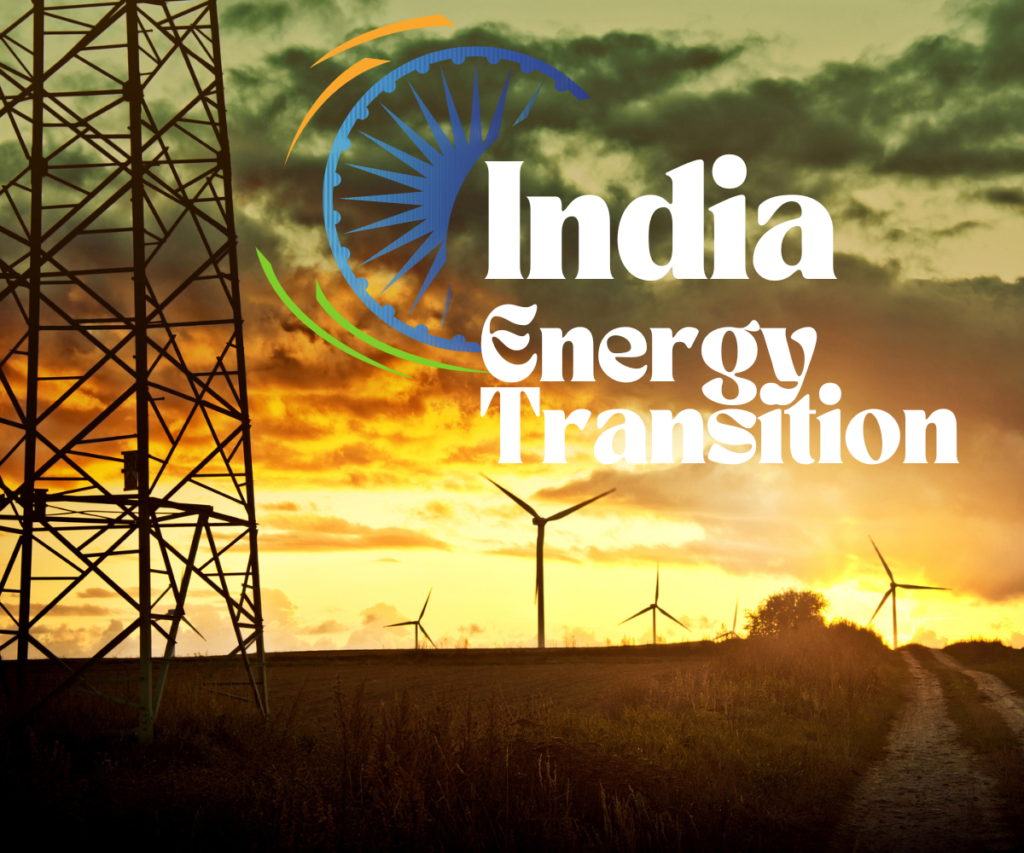Indias Strategy for Energy Transition

This editorial is based on ‘India’s just energy transition is more than a coal story’ which was published in the Hindu on 06/02/2023 and article extracted from www.drishtiias.com. It talks about the issues that concern Just Energy transitions and ways to address it. Background Image Credit: freepik.com
India’s Just Energy Transition Strategy: Issues and Interventions
India has taken significant steps towards a just energy transition by setting ambitious targets for renewable energy and updating its Nationally Determined Contributions (NDC) under the Paris Agreement to reflect its aim of achieving 50% cumulative electric power installed capacity from non-fossil fuel-based energy sources by 2030. However, India must develop a coherent domestic Just Energy Transition (JET) strategy to negotiate a financing deal that addresses its unique set of socio-economic challenges.
The Just Energy Transition (JET) refers to the shift from reliance on non-renewable, fossil fuel-based energy sources to renewable, clean energy sources in order to mitigate the impacts of climate change and promote sustainability. The transition to a just energy system seeks to ensure that access to energy is equitable and benefits all members of society, rather than primarily benefiting corporations and the wealthy. This includes promoting renewable energy sources such as wind and solar, as well as energy efficiency measures and the development of energy storage solutions.
The Just Energy Transition Partnership (JET-P) is emerging as the key mechanism for multilateral financing by developed countries to support an energy transition in developing countries. After South Africa, Indonesia, and Vietnam, India is considered the next candidate for a JET-Partnership, and India’s G-20 presidency could potentially be an opportune moment to forge a deal.
However, India’s initial JET-P negotiations last year reportedly stalled over coal ‘phase-down’ and how to operationalize India’s just transition. The emphasis by developed countries on coal phase-down, without adequate attention to country context, disregards the crucial difference in energy transition between industrialized and emerging economies.
Issues with the Just Energy Transition
A just energy transition presents a set of unique challenges that must be addressed to ensure equitable access to clean energy and promote socio-economic development. These issues include:
Affect Near-term Fossil-Dependent Jobs
The transition to a more sustainable energy mix can impact workers who are currently employed in the fossil fuel industry. The shift away from fossil fuels may result in job losses, which can be disruptive for affected communities and workers.
Disrupt Forms of Future Energy Access
The transition to a cleaner energy mix may disrupt traditional forms of energy access, particularly in developing countries where access to reliable electricity remains limited. The cost and infrastructure requirements of new energy sources, such as wind and solar power, may be challenging to implement in areas with limited resources.
Shrink the State’s Capacity to Spend on Welfare Programs
As the government invests in new energy infrastructure and technology, there may be less funding available for programs such as healthcare, education, and housing assistance. This can result in reduced support for vulnerable populations and potentially worsen existing socio-economic disparities.
Cost
Despite the long-term benefits, the initial cost of transitioning to renewable energy can be higher, making it a challenge for some communities, particularly those with limited financial resources.
Energy Storage
Renewable energy sources, such as wind and solar, are not always available and must be stored for use during times when the sun isn’t shining or the wind isn’t blowing.
Energy Infrastructure
Significant investments in energy infrastructure are needed to support the transition to renewable energy sources.
Table 1: India’s Renewable Energy Targets
| Target | Goal |
|---|---|
| Non-fossil energy | 500 GW |
| Renewable energy | 450 GW |
| Renewable energy purchase obligation | 43% by 2030 |
| Net zero emissions | 2070 |
| Cumulative electric power capacity from | 50% non-fossil fuel sources by 2030 |
Table 2: Potential Energy Transition Strategies for India
| Strategy | Description |
|---|---|
| Acceleration in RE Deployment Rates | Shifting energy demand patterns in ways that enable faster RE capacity addition such as solarisation of agricultural electricity demand. |
| Electrification of diesel-powered Micro, Small and Medium Enterprises (MSMEs). | |
| Decentralised RE for residential cooking and heating. | |
| Stimulation of energy demand through rural productivity enhancement will further aid RE acceleration as well as help to address rural-urban economic divide, create rural jobs, and thereby address inter-generational and spatial inequities. | |
| Domestic Manufacturing of Clean Energy | Critical to sustain a JET, build energy self-sufficiency, and tap the green jobs promise of 21st century energy. |
Related Steps Taken by India
India has signaled a commitment to clean energy with ambitious targets like 500GW of non-fossil, including 450 GW Renewable Energy (RE) capacity addition and 43% RE purchase obligation by 2030. These targets are supported through complementary policy and legislative mandates, missions, fiscal incentives, and market mechanisms. Note for India, we’ve set ourselves with an ambitious long-term goal of reaching net-zero emissions by 2070.
